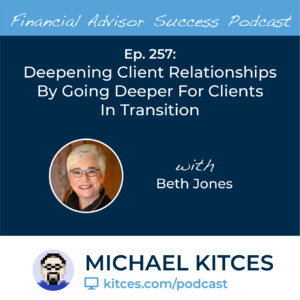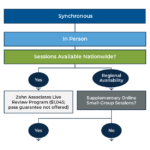Financial advisors often assist their clients with deciding when to file for Social Security benefits, helping them choose between filing prior to their Full Retirement Age (FRA) for a reduced benefit, filing at FRA for the ‘full’ benefit, or delaying benefits after FRA until (at the latest) age 70 to increase the monthly benefit by 8% per year. Often, advisors encourage their clients to delay their filing to increase their future monthly benefit (since the ‘return’ on delaying benefits can be higher than what the client would expect to achieve on their invested assets), unless there are clear reasons (such as health issues) that the client would not expect to live long enough to make delayed filing worth the wait.
But for some people, the decision of when to file for Social Security is not strictly about numbers. Individuals can experience feelings of anxiety and doubt about the decision to delay filing – even if the available information supports the case for delaying – if they fear they will not live long enough to enjoy the higher monthly benefit. These feelings can be magnified when the decision to file or delay is framed as a one-time choice, increasing the pressure on the individual to make the ‘right’ decision in spite of uncertain information (such as future health and life expectancy) on which to base it. Consequently, a person might feel compelled to file for Social Security benefits rather than delaying them, even when doing so might increase their risk of outliving their retirement savings.
Fortunately, the Social Security rules allow advisors to reframe the filing decision to make it easier for their clients to decide more confidently whether to file or delay. Because, in reality, delaying Social Security benefits isn’t a one-time decision at all: An eligible individual can change their mind and file for benefits at any time. Furthermore, once they have reached FRA, that person can apply for up to six months of retroactive benefits, allowing them to receive a lump sum of accumulated payments while also activating their monthly benefits going forward. Meaning that, if the individual initially decides to delay filing, they effectively have a six-month window to change their mind without giving up any of the benefits they would have received had they chosen to file in the first place.
Therefore, rather than asking clients to make a single, irrevocable decision for the entire 3- to 4-year period between FRA and age 70, advisors can, instead, reframe the choice as a series of reversible decisions for six months at a time. If the client changes their mind within that six-month timeframe and wants to file, they can file a retroactive application and claim their benefits as if they had done so at the beginning of the period. Otherwise, they can continue to delay filing for another six months, further repeating the cycle until the client either decides to file or reaches age 70 (at which point they would file anyway, having reached the maximum age for delayed benefit credits). Not only does this framing provide the client with a more reasonable timeframe to foresee future health issues or other factors that could cause them to change their mind, but because the six-month intervals align with the period in which individuals can apply for retroactive benefits, each six-month decision is entirely reversible.
As with any Social Security filing strategy, it’s important to be aware of the risks and tradeoffs of recommending this strategy to clients – for example, applying for retroactive benefits and receiving a six-month lump sum could result in a temporary spike in taxable income, with potential cascading effects on tax deductions, credits, and Medicare premiums. Ultimately, however, by nudging clients with the option to consider when to claim benefits through six-month ‘reversible’ decisions, advisors can potentially help them make better choices and to act with confidence!





 Welcome back to the 257th episode of the Financial Advisor Success Podcast!
Welcome back to the 257th episode of the Financial Advisor Success Podcast!


 Welcome back to the 256th episode of the Financial Advisor Success Podcast!
Welcome back to the 256th episode of the Financial Advisor Success Podcast!
